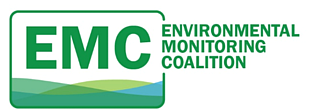

The Environmental Monitoring Coalition has developed two guidance documents, one on instrument calibration and one on the initial demonstration of capability for drinking water methods.
Guidance on Instrument Calibration
This document was sent to EPA. Comparable letters were sent to ASTM and Standard Methods. The letter requests EPA and others to remove all references to coefficient of determination or correlation coefficient as an acceptable instrument calibration evaluation criteria all methods. The request is consistent with the 2016 R=TNI standard requirements for calibration in Module 4 Link
Guidance on Initial Demonstration of Capability for Drinking Water Methods
Most EPA drinking water methods require that laboratories conduct an Initial Demonstration of Capability (IDC) which includes verifying the Minimum Reporting limit (MRL) using the Half Range Prediction Interval of Results (HRPIR) for all analytes is within limits published in the method. This requirement has proven difficult to meet for methods which contain many analytes. The EPA drinking water program agrees and only requires that the HRPIR be met for regulated drinking water analytes. State accreditation/certification programs believe any analyte listed within the Fields of Accreditation of the laboratory must meet method requirements. This provides guidance on how to address this issue. Link
The US Environmental Protection Agency (EPA) created the Environmental Laboratory Advisory Board (ELAB) on July 1, 1995 to enhance EPA's measurement programs and to facilitate the operation and expansion of a national environmental accreditation program. In the past twenty-five (25) years, ELAB produced over thirty (30) reports on a variety of topics relating to relating to environmental measurements. On October 17, 2019, the EPA, as part of Executive Order 13875, Evaluating and Improving the Utility of Federal Advisory Committees, disbanded ELAB.
In response to this action, four (4) organizations:
came together and created a new group, the Environmental Monitoring Coalition, to continue the work of ELAB.
The EMC develops consensus recommendations and provides advice to federal and state agencies and stakeholder groups that will reflect the opinions and positions of its constituents on issues that include but are not limited to: